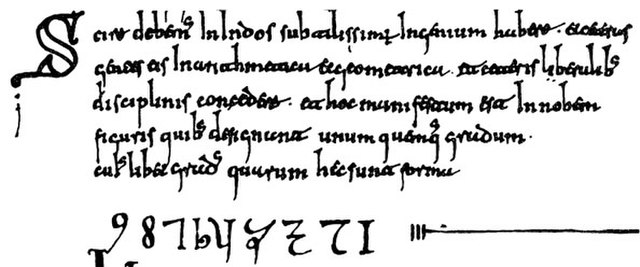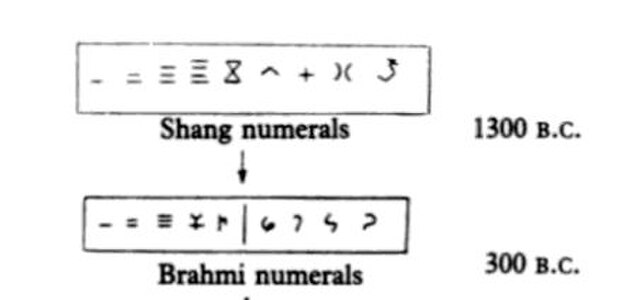The ten Arabic numerals 0, 1, 2, 3, 4, 5, 6, 7, 8, and 9 are the most commonly used symbols for writing numbers. The term often also implies a positional notation using the numerals, as well as the use of a decimal base, in particular when contrasted with other systems such as Roman numerals. However, the symbols are also used to write numbers in other bases such as octal, as well as for writing non-numerical information such as trademarks or license plate identifiers.
The first Arabic numerals in the West appeared in the Codex Albeldensis in Spain.
A page of the Liber Abaci. The list on the right shows the Fibonacci sequence: 1, 2, 3, 5, 8, 13, 21, 34, 55, 89, 144, 233, 377. The 2, 8, and 9 resemble Arabic numerals more than Eastern Arabic numerals or Indian numerals
A German manuscript page teaching use of Arabic numerals (Talhoffer Thott, 1459). At this time, knowledge of the numerals was still widely seen as esoteric,[citation needed] and Talhoffer presents them with the Hebrew alphabet and astrology.
Chinese Shang dynasty oracle bone numerals of 14th century B.C.
Roman numerals are a numeral system that originated in ancient Rome and remained the usual way of writing numbers throughout Europe well into the Late Middle Ages. Numbers are written with combinations of letters from the Latin alphabet, each letter with a fixed integer value. Modern style uses only these seven:
Roman numerals on stern of the ship Cutty Sark showing draught in feet. The numbers range from 13 to 22, from bottom to top.
A clock face with the Roman numerals typical for clocks, in Bad Salzdetfurth, Germany
Epitaph of centurion Marcus Caelius, showing "XIIX"
Padlock used on the north gate of the Irish town of Athlone. "1613" in the date is rendered XVIXIII, (literally "16, 13") instead of MDCXIII.








